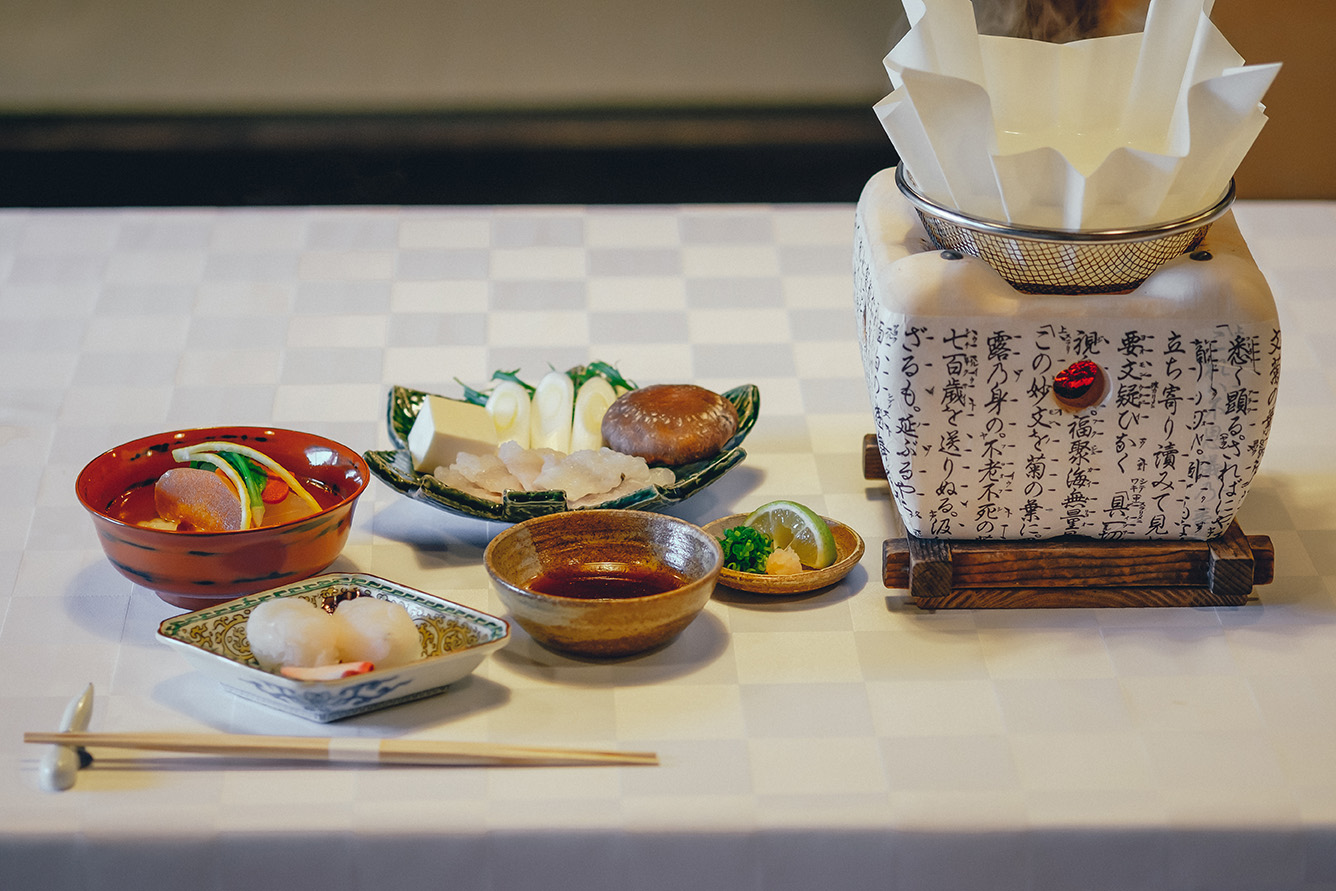
伝統の中津鱧料理
玖珠町はテーブルマウンテンに囲まれた盆地で、朝晩の寒暖差が大きな町です。中津市は海に面した平野を持ち、玖珠町とは広大な渓谷「耶馬渓」でつながっています。
しっとりと深い霧に包まれる耶馬渓の森に降る雨は、木々の生命を吸い込み大地で濾過され山国川に集まり、瀬戸内海一大きな「中津干潟」にそそぎます。盆地、渓谷、平野、干潟と、バラエティに富んだ地形は豊かな食文化を生みました。明治時代、村上田長が通した道は玖珠と中津の二つの城下町をつなぎ、人々の往来とともに食の流通も盛んになりました。
山・川・海の様々なグルメを楽しめる「やばけい遊覧」の旅。

おおいた豊後牛のステーキ丼
古来「豊後国(ぶんごのくに)」であった玖珠町は「おおいた豊後和牛」の一大産地。大正時代から品種改良を進め「牛は豊後じゃ玖珠がもと」と言われるほどとなりました。中でも玖珠町で生まれた「糸福号」は「おおいた豊後和牛」の名を全国に広めました。きめ細やかな霜降りに、甘くまろやかな味が自慢の肉です。
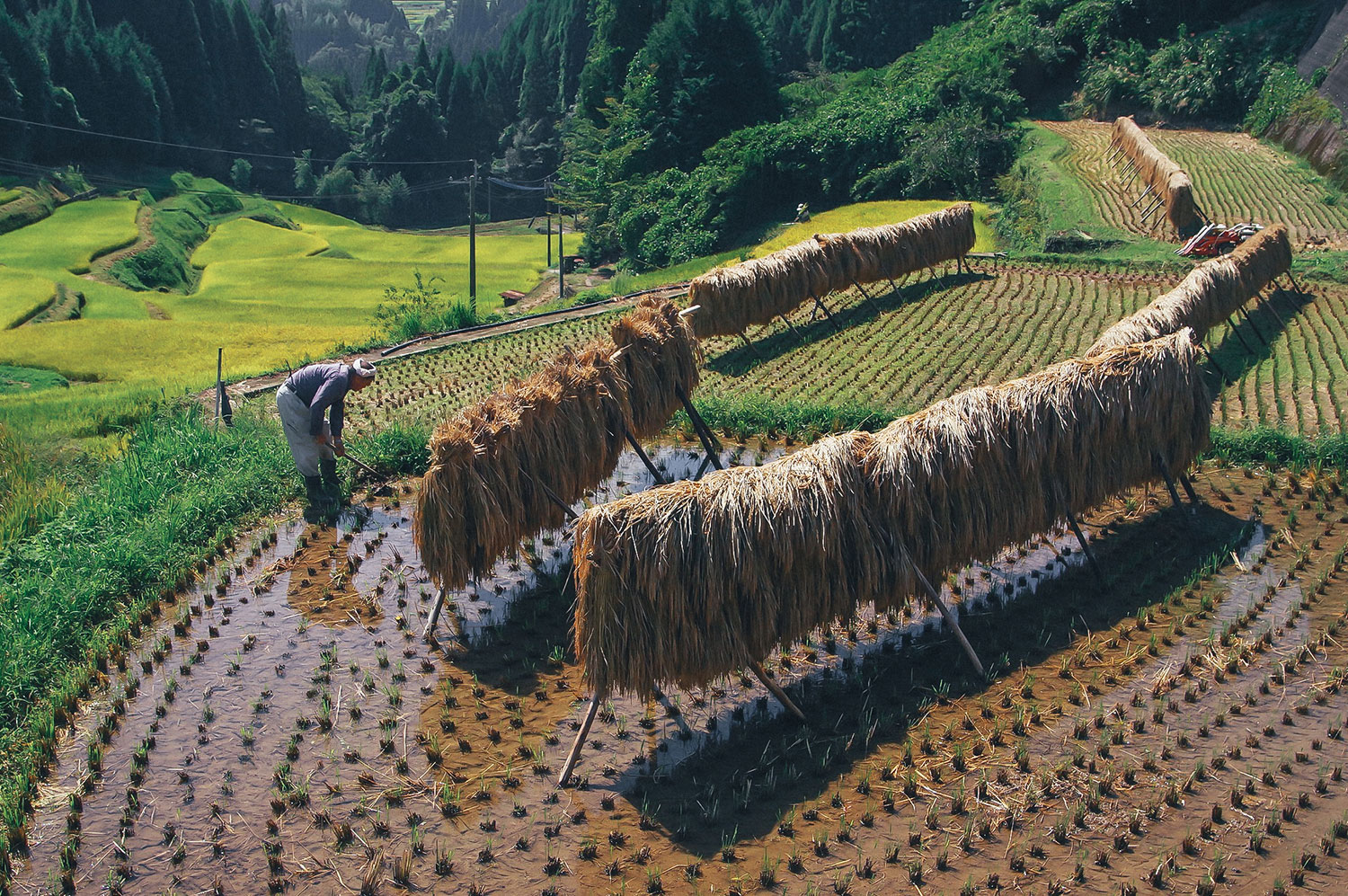
かけ干しにこだわる玖珠米
玖珠町は米の産地。寒暖差の厳しい気候と肥沃な赤土、豊富な湧き水で育て、掛け干しにこだわり、うまみを引き出しています。粘りが強く、もちもちとした食感。甘みが強いのが特徴で、その美味しさから、JR九州のクルーズトレイン「ななつ星in九州」でも提供されています。
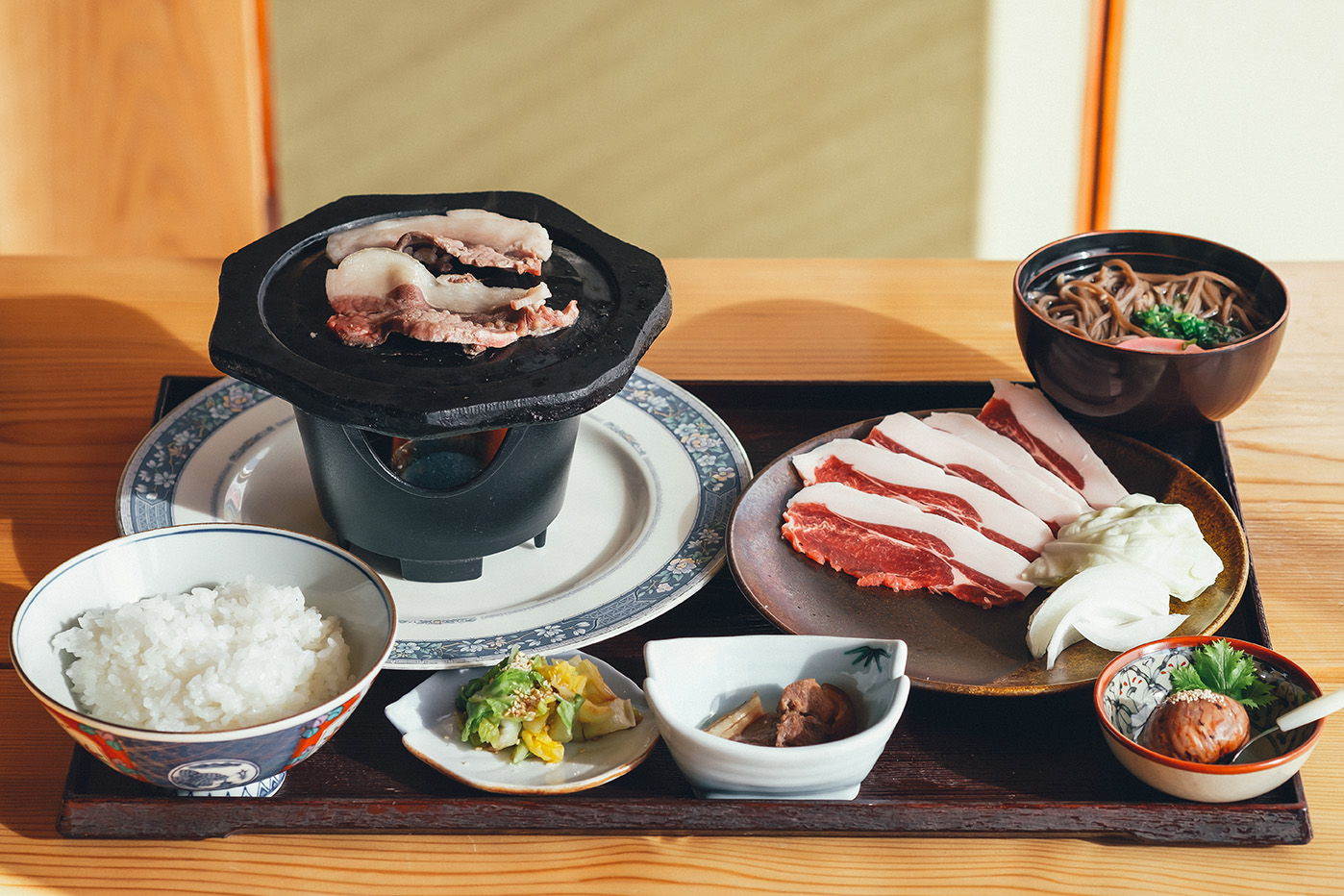
耶馬渓ジビエ

耶馬渓ジビエ
最近耳にすることが多くなったジビエという言葉。耶馬渓では古くから旅人たちもその味を堪能してきました。耶馬渓の名付け親「頼山陽」は、「しし鍋」のもてなしを大いに楽しみ、巨岩の上で酒を飲みかわしたそう。猪と鹿の肉は、刺身をはじめ、焼肉、しし鍋、カレーにコロッケと、様々に野趣あふれる肉の旨みが楽しめます。
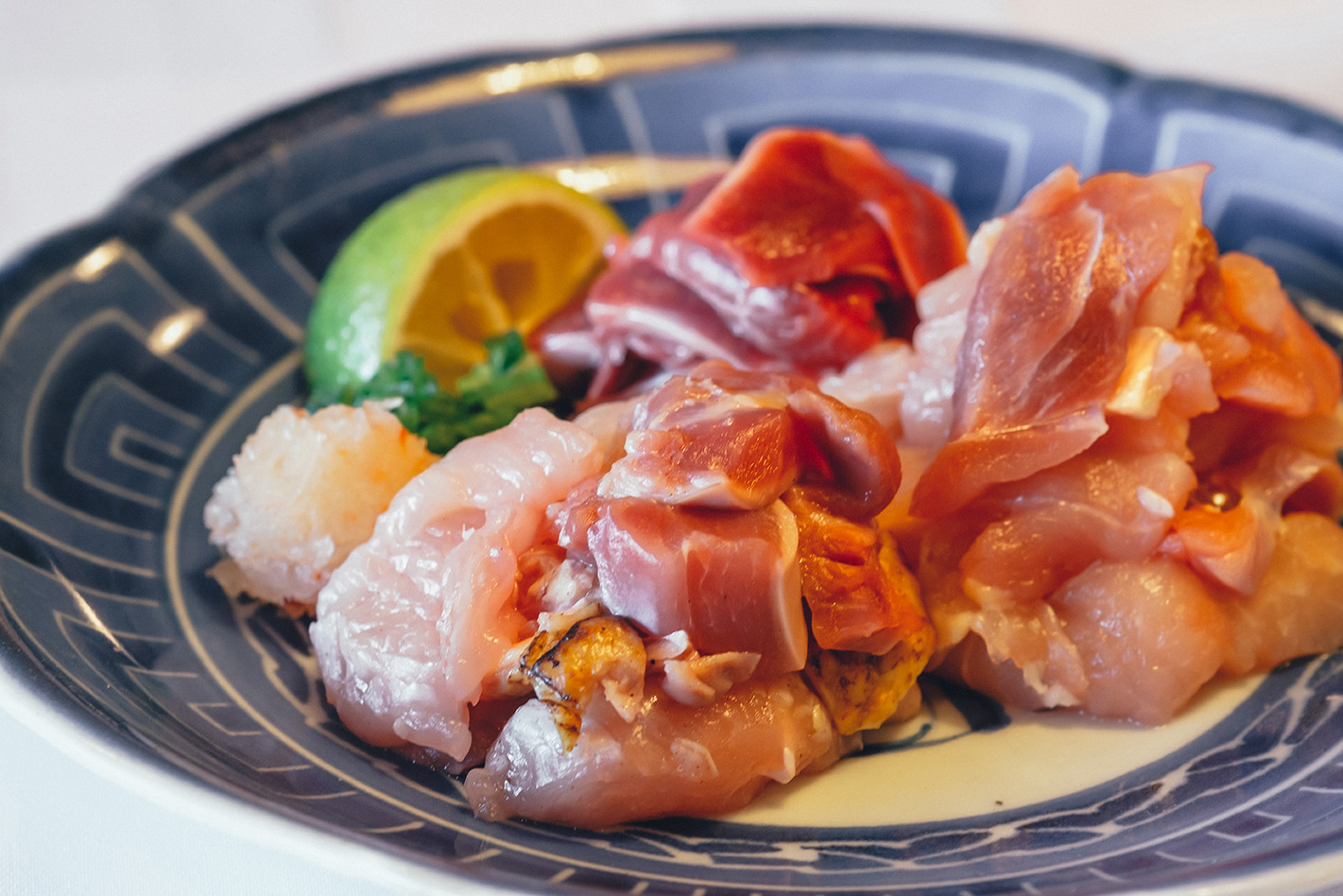
鶏肉の刺身とタタキ
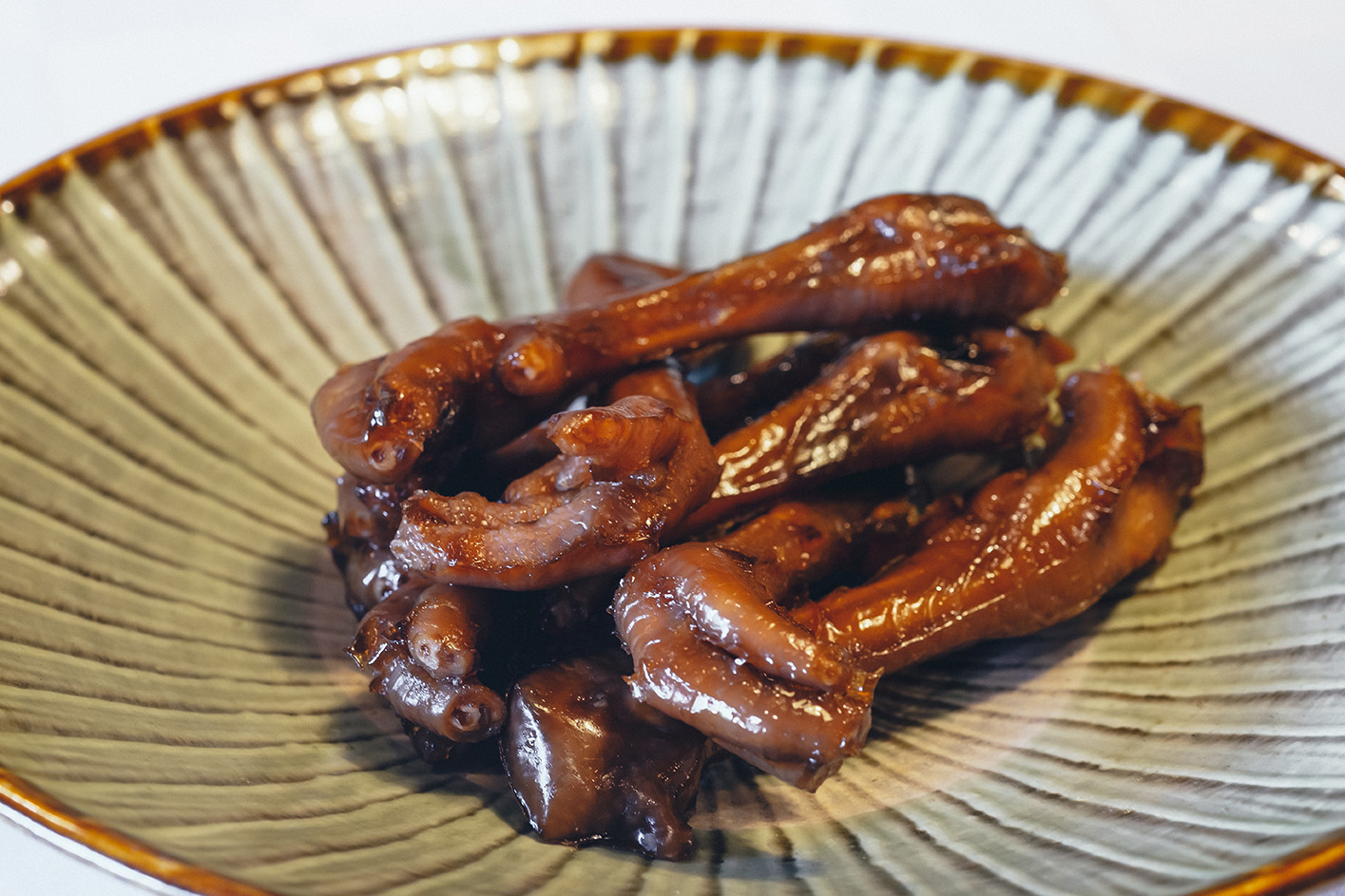
鶏の足を煮込んだもみじ
大分県といえば鶏。全国区の人気を誇る「中津から揚げ」はもちろんですが、地元おすすめは文句無しに「刺身」と「タタキ」。薬味のゆず胡椒が鶏のうま味を引き立てます。なかでも珍味は玖珠町で食べられる「もみじ」。もみじの葉っぱに似ていることから名付けられた「鶏の足」です。見た目にびっくりするかもしれませんが、甘辛く煮た脚はもちもちした触感でうまみが強く、おやつや酒のつまみとしても親しまれています。
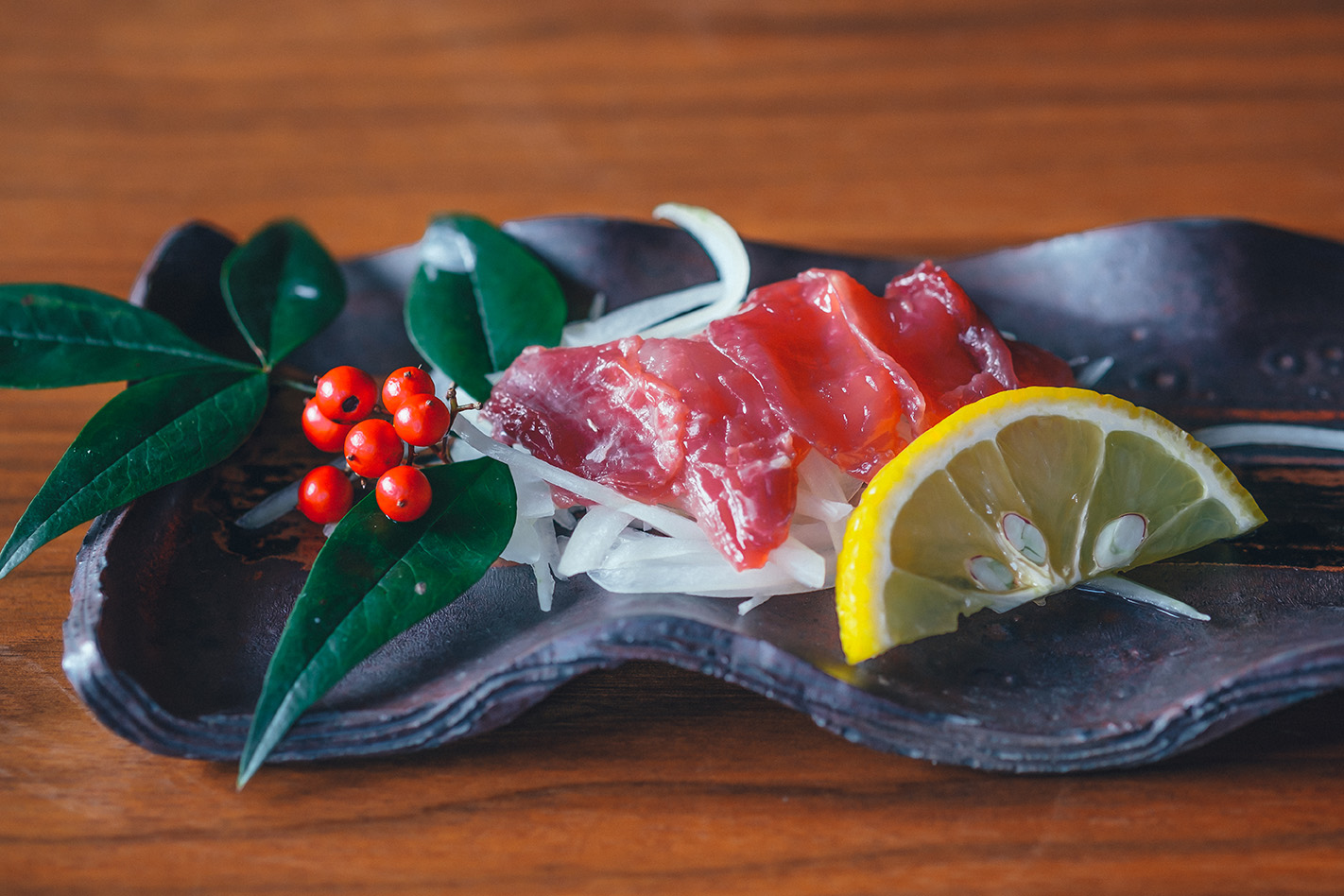
耶馬渓すっぽん料理
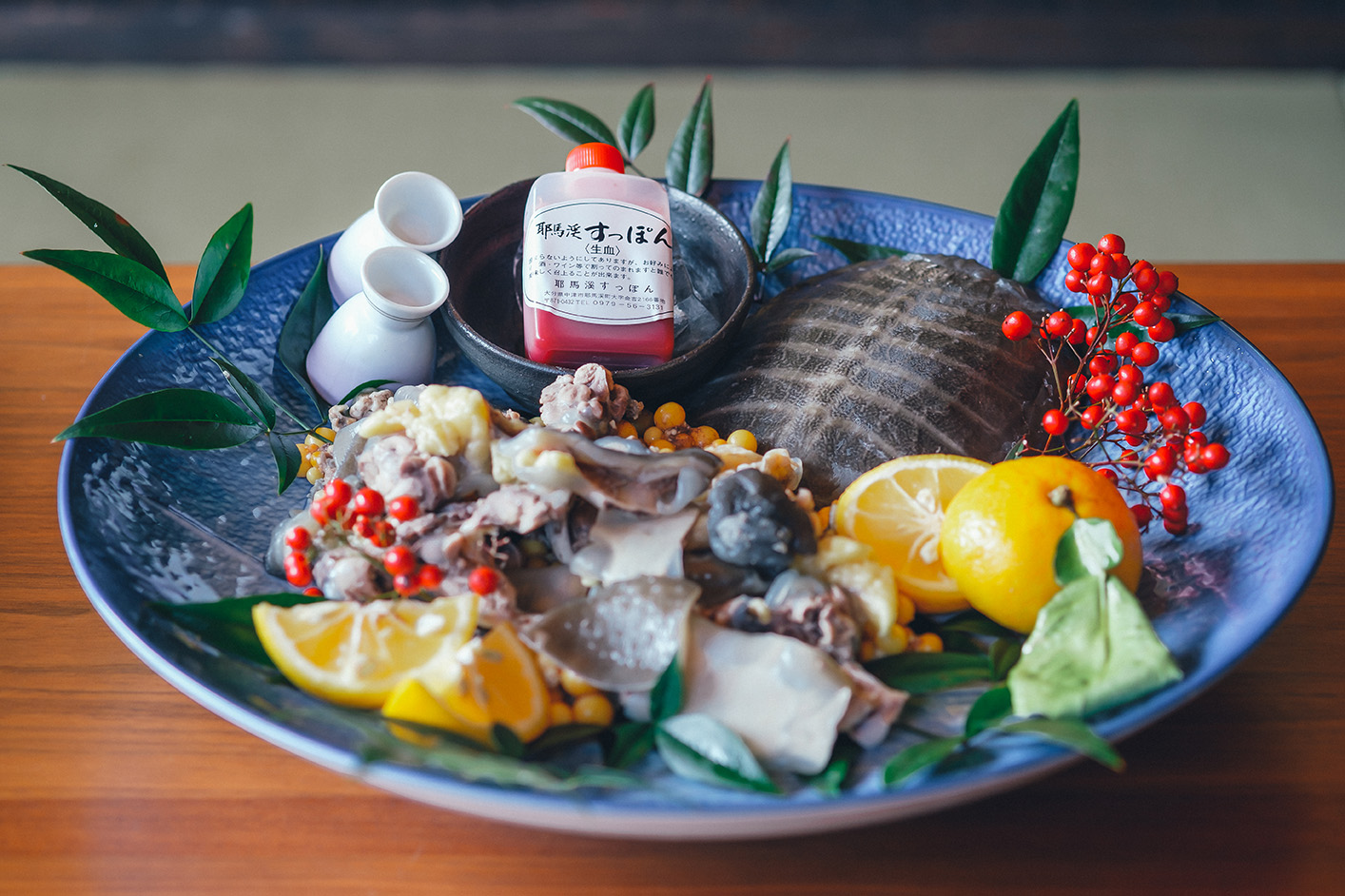
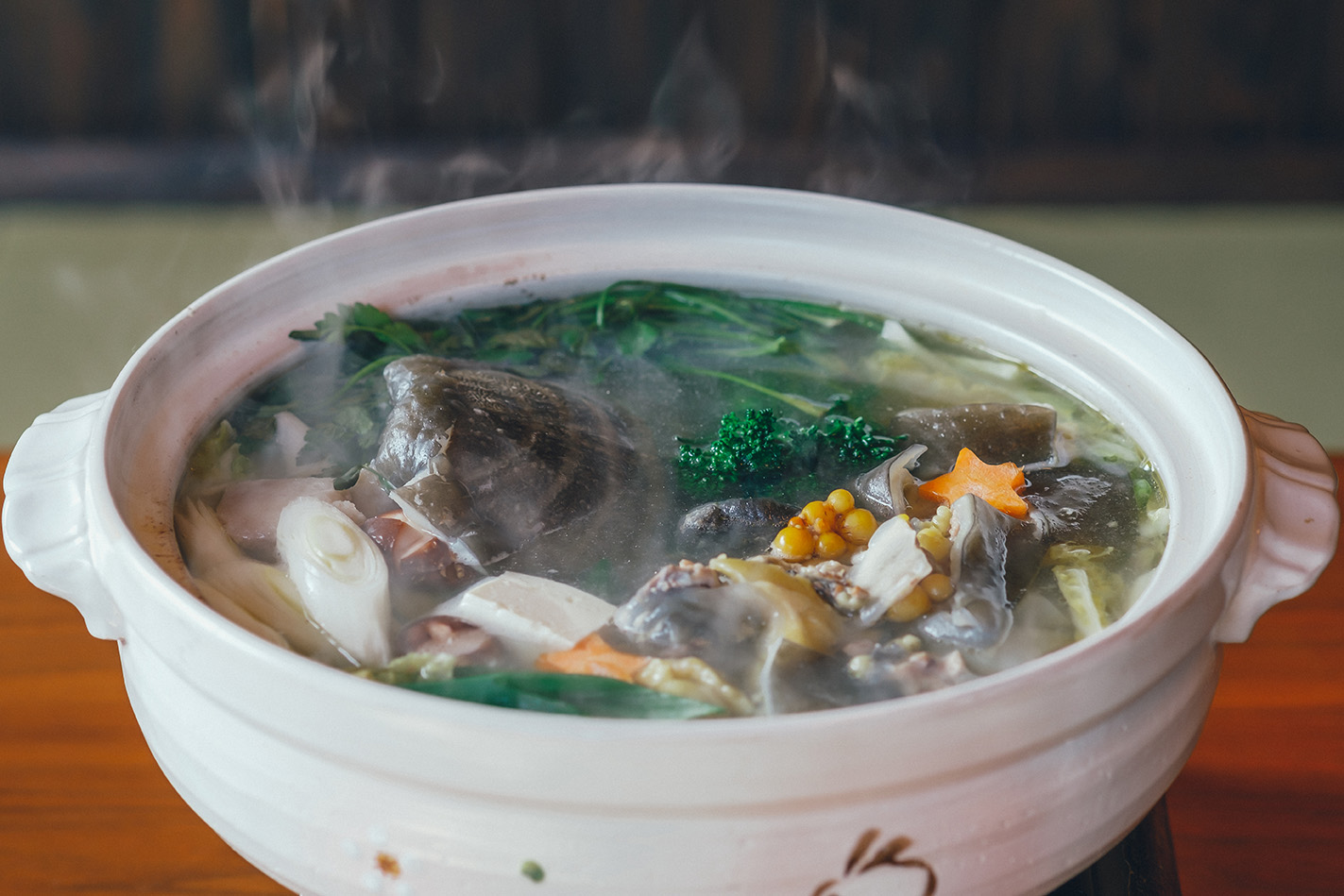
中津から玖珠にかけて豊富に湧き出す耶馬渓温泉。耶馬渓では、ややぬるめの温度を利用してすっぽんを育てています。温泉育ちの美肌すっぽんは、臭みがなく、お客様にはお刺身を大皿にたっぷり盛ってもてなします。あったかな鍋でぷるぷるしたコラーゲンたっぷりのとろけるお肉を味わったら、〆は雑炊。すっぽんエキスをあますことなくご賞味ください。

耶馬渓蕎麦
耶馬渓では、落ち延びてきた平家の落人が伝えた蕎麦が旅人に愛されてきました。羅漢寺を訪れた玖珠の藩主も、指月庵で耶馬溪の風景とともに蕎麦を楽しんだと言われています。新そばの季節には、十割そばがおススメです。まず香りを楽しんだら、一口目はそば粉の味をしっかり味わうために、何もつけずにお食べください。口いっぱいにひろがる濃厚な蕎麦の風味をお楽しみいただけます。お土産には、店頭で蒸かす「そば饅頭」はいかがでしょうか。初夏と初秋、一年に二度花をつけ真っ白に染まる蕎麦畑もぜひ見ていただきたい光景です。

自然薯の天ぷら
耶馬渓の岩塊を思わせるごつごつとした丸いかたまりは「自然薯の天ぷら」です。箸をいれるともっちりとした強い弾力。塊が割れ、ふわっと湯気が沸きあがります。皮ごとすりおろした自然薯の強烈な粘りを活かし、そのまま丸めて油にいれた「自然薯の天ぷら」を熱々の天ツユにつけていただきます。自然薯採りの名人が探しあてる貴重な大地のめぐみ。耶馬渓地方でだけ味わえる秋の一品は、一部の店でしか提供されていない、隠れた耶馬渓名物です。
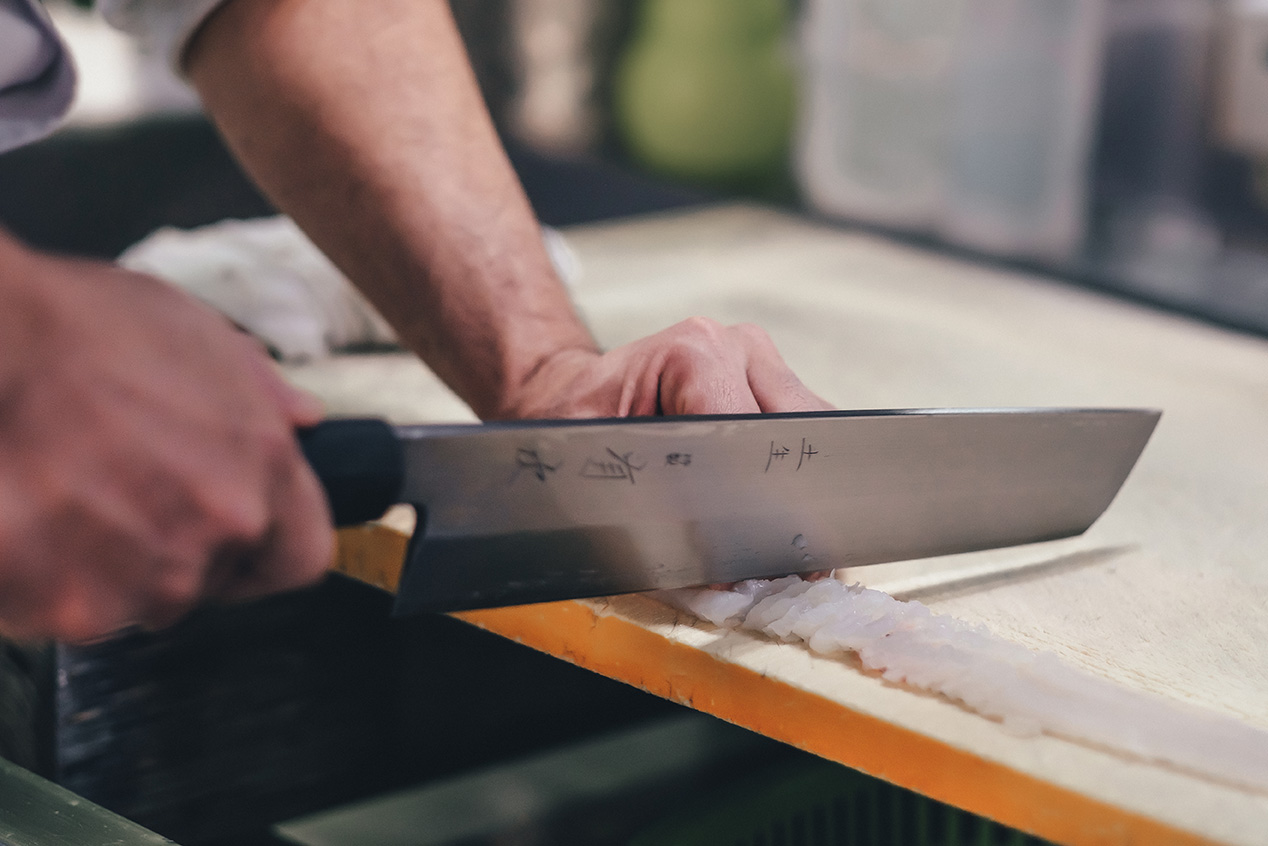
鱧の骨切り

活き鱧の握り寿司
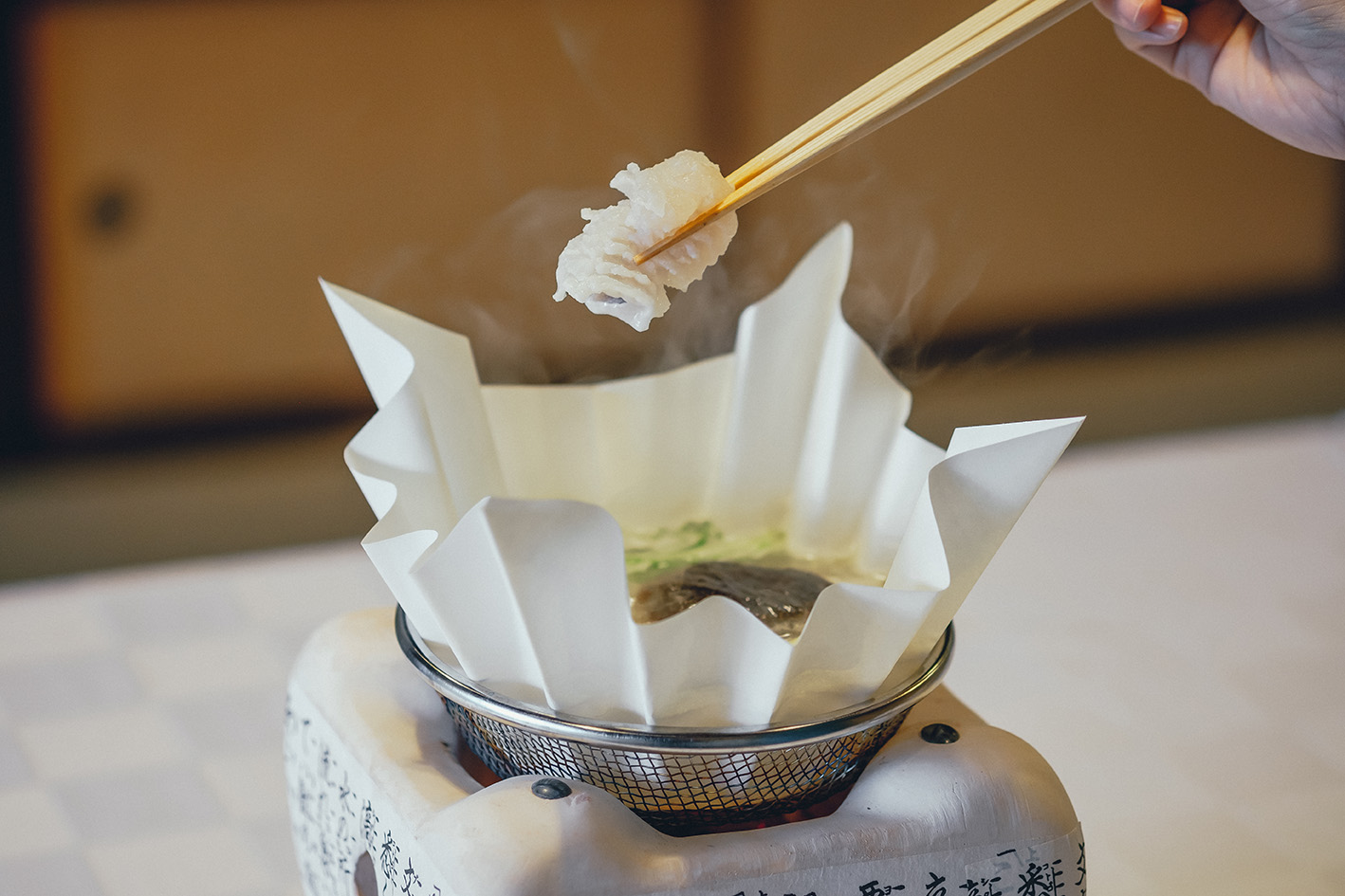
鱧のしゃぶしゃぶ
耶馬渓の森のミネラルをたっぷり含んだ水が注ぐ中津の海は美味しい魚介類の宝庫。村上田長がつくった道のおかげで、今でも玖珠町の魚屋さんには中津から仕入れた魚が並んでいます。
美味しい中津の魚の中でも、特におすすめは鱧料理です。夏のイメージがある鱧ですが、中津では一年中楽しめ、古くから日常的なお魚として親しまれてきました。ザクザクと細く薄く骨切りをする技術も、実は中津から京都に伝えられたと言われています。鱧の醍醐味が味わえるのが「鱧のしゃぶしゃぶ」です。お湯につけるとくるくると丸まる真っ白な切り身から、じゅわっと染み出す油の旨みがたまりません。また、新鮮な鱧が手に入る中津では、「鱧のお寿司」も味わえます。お醤油にはつけず、ぱらぱらとふりかけた塩とカボスだけで味わえば、繊細な骨切りをした身が、口の中でほどけて溶けて、甘みがゆっくり広がります。

巻柿

きんつば
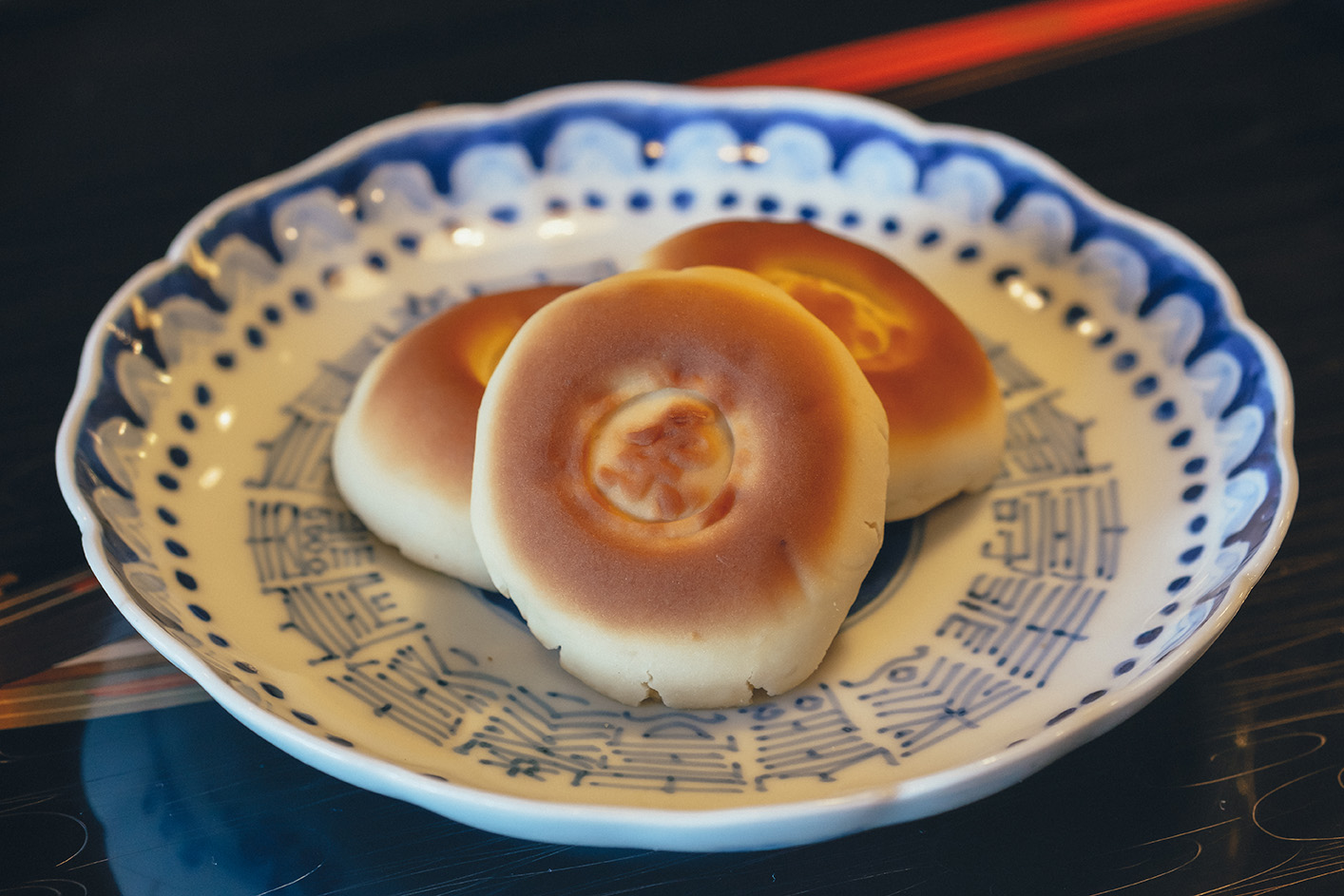
栗饅頭
歴史ある耶馬渓土産といえば、江戸時代からの名物「巻柿(まきがき)」です。干した川底柿の種を抜き、円柱状に幾重にも重ねたもので、薄く輪切りにすると渦巻き状の断面が楽しめます。大正時代に耶馬渓を旅した田山花袋のもとにも巻柿が届けられた記録が残っています。藁で包んだ形状が印象的なお土産で、藁に包んで吊るして保存していたことに由来しています。
また、玖珠を代表するお菓子は栗饅頭。栗饅頭といえば、茶色く色づけられ、栗の実が入ったものが連想されますが、玖珠のものはちょっと違います。丸く扁平な形状で、餡を包んだほろほろとした皮がくせになる、素朴な甘味のお菓子です。玖珠町が耶馬渓観光の入り口として栄えた頃の昭和元年に誕生した銘菓で、羅漢寺土産としても親しまれていた歴史があります。
刀のつばをイメージした丸く平べったいきんつばとあわせ、玖珠町には独特の和菓子が伝えられています。
food culture

Traditional Nakatsu Conger Eel Cuisine
Kusu-machi is a town in a basin surrounded by tableland with large variations in temperature between morning and evening. Nakatsu has open fields looking out onto the sea and is connected to Kusu-machi by the vast ravine known as
Yabakei. The rain which falls in the forest of Yabakei, enveloped in a dense, wet fog, soaks up the life force of the trees and is filtered by the earth before gathering in Yamakuni River and pouring into the Nakatsu Tidal Flats—the largest of its kind on the Seto Inland Sea. The highly varied terrain here, with basins, ravines, open fields, and tidal flats, created an abundant food culture. The road which Murakami Dencho opened up during the Meiji period connects the two castle towns of Kusu and Nakatsu, and the coming and going of people on this road brought prosperity to the circulation of food as well. A Yabakei Sightseeing journey allows the traveler to enjoy a variety of cuisine from the mountains, rivers, and sea.

Bungo Wagyu Steak and Rice Bowl
Kusu-machi, which was Bungo-no-Kuni in ancient times, is one of the largest producing areas of Oita Bungo Wagyu beef. Selective breeding has been performed in the area since the Taisho period to the extent that people now say that “beef in Bungo started in Kusu.” In particular, the Itofuku-go of Kusu-machi is responsible for spreading the name of Oita Bungo Wagyu throughout the country. The meat boasts a fine-grained marbling and a sweet, mild flavor.

Kusu’s Rice With a Focus on Kakeboshi Drying
Kusu-machi is a rice producing area. Rice here is raised in a climate with intensely varying temperatures, fertile red clay, and an abundance of spring water, and a focus on kakeboshi (hang-drying) brings out the umami of the rice. It is quite sticky with a chewy texture. It has a characteristically strong sweetness and, due to its great flavor, is even served on the JR Kyushu cruise train Seven Stars in Kyushu.

Yabakei’s Wild Game

Yabakei’s Wild Game
One hears the term “wild game” more and more recently. Travelers to Yabakei have been enjoying the flavors of wild game from times of old. It is said that the man who named Yabakei, Rai Sanyo, greatly enjoyed the boar stew he was served there and drank together with others atop a giant rock. The meat of boars and deer is full of a rustic umami and can be enjoyed as sashimi or in a variety of other ways, including as grilled meat, boar stew, curry, and croquettes.

Chicken Sashimi and Tataki

Momiji (Boiled Chicken Feet)
Oita Prefecture is famous for its chicken. Nakatsu Kara-age, famous around the country, is a great choice, but the undisputed local recommendations are sashimi and tataki. The yuzu citrus pepper paste used as a a condiment brings out the umami of the chicken. One particularly great delicacy eaten in Kusu-machi is momiji. This dish is made from chicken feet and gets its name from the fact that chicken feet look like momiji (Japanese maple) leaves. The appearance of the dish may be surprising, but these sweet and salty boiled chicken feet have a chewy texture and strong umami flavor and are well-loved as a snack or as a dish to be enjoyed with alcohol.

Yabakei Soft-Shell Turtle Cuisine


The Yabakei hot springs well up in abundance from Nakatsu to Kusu. Soft-shell turtles are raised in Yabakei using fairly lukewarm water. These turtles raised in hot springs with beautiful skin have no bad smell and are served up for guests piled high on large plates as sashimi. After enjoying the meat with jiggly collagen which melts in your mouth from a warm hot pot, the meal is finished off with a rice gruel made from the remaining soup. Relish every last drop of soft-shell turtle flavor.

Yabakei Soba
The soba handed down by the defeated soldiers of the Heike Family who managed to run away has long been loved by travelers to Yabakei. The feudal lords from Kusu who visited Rakanji Temple are also said to have enjoyed soba while looking out on the view of Yabakei from Shigetsuan. During the season of fresh buckwheat, the soba using 100% buckwheat flour is highly recommended. After enjoying the aroma of the soba, try your first bite without any flavoring so that you may enjoy the flavors of the buckwheat flour. In doing so, you will be able to enjoy the rich soba flavor which fills your mouth. Get a soba manju steamed at the storefront as a souvenir. Flowers bloom in the buckwheat fields twice per year in early summer and early fall, and the fields dyed pure white with flours are certainly a sight to behold.

Japanese Yam Tempura
This round clump reminiscent of the masses of rock in Yabakei is Japanese yam tempura. Inserting your chopsticks into the delicacy will reveal a strong and springy elasticity. Steam gently rises from the tempura when the clump is broken open. Using the powerful viscosity of the Japanese yam grated with the skin on, this Japanese yam tempura is balled up and fried in oil as-is and served with piping hot tempura dipping sauce. These yams are a precious blessing of the Earth tracked down by expert Japanese yam pickers. This fall delicacy, which can only be enjoyed in the Yabakei region, is a hidden specialty of Yabakei only available in a select few shops.

Conger Eel Bone Cutting

Fresh Conger Eel Nigiri Sushi

Conger Eel Shabu-Shabu Hotpot
The sea of Nakatsu, into which water full of minerals from the forests of Yabakei flows, is a treasure trove of delicious seafood. Thanks to the road created by Murakami Dencho, one can still find fish procured from Nakatsu in the fish shops of Kusu-machi even today. Of particular note among the delicious fish of Nakatsu is the region’s conger eel cuisine. Conger eel is often associated with summer, but it can be enjoyed year-round in Nakatsu and has been well-loved there from times of old as a common fish. The technique for finely and thinly chopping up the bones is actually said to have been passed down to Kyoto from Nakatsu. Conger eel shabu-shabu hotpot is a dish which allows one to enjoy the truly delicious flavors of the conger eel. The umami of the oil which slowly seeps out from the pure white meat that rolls up around and around after being dipped in the hot water is irresistible. What’s more, in Nakatsu, where fresh conger eel is readily available, one can enjoy conger eel sushi as well. A sprinkling of salt and kabosu citrus is used in place of soy sauce, and the meat with its bones finely cut breaks apart and melts in your mouth with a slowly expanding sweetness.

Makigaki

intsuba

Chestnut Manju
One of the most famous historical souvenirs from Yabakei is the specialty which has been made since the Edo period, makigaki. The confection is made by removing the seeds from dried riverbed persimmons and layering them in a cylindrical shape, and thinly slicing those cylinders into round slices allows one to enjoy the resulting spiral cross-section. A record remains showing where makigaki were delivered to Tayama Katai, who traveled to Yabakei in the Taisho period. The souvenir wrapped in straw makes an impression with its shape, and this presentation comes from the historical practice of wrapping the confection in straw and hanging it up for storage. In addition, a typical confection from Kusu is chestnut manju. Most people think of brown-colored manju with a chestnut
inside when they think of chestnut manju, but the chestnut manju from Kusu are slightly different. They are confections with a simple sweetness which are formed into a round, flat shape, and the melt-in-your-mouth dumpling wrapper which encases the red bean paste will keep you coming back for more. Chestnut manju are a famous confection which were born in the first year of the Showa era (1926) when Kusu-machi was flourishing as the entranceway for Yabakei sightseeing, and they have a history of being well-loved as a Rakanji Temple souvenir as well. Along with the round and flat kintsuba, which is made to resemble the tsuba (guard) of a sword, Kusu-machi is home to a tradition of unique Japanese confections.
